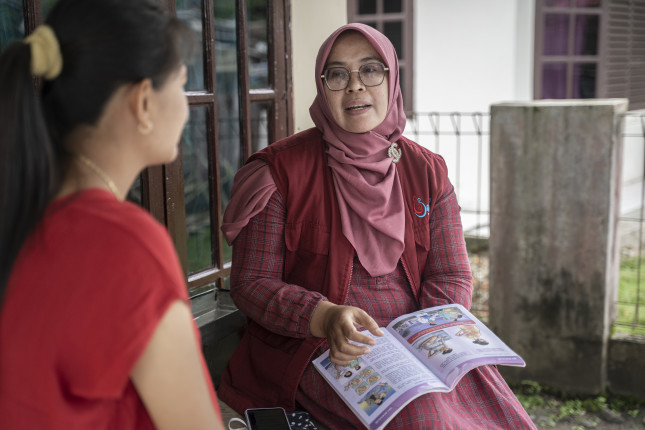-
Environmentalists Need To Talk About Population Growth. Here’s How.
October 3, 2022 By Sarah Baillie
On November 15, the world population is projected to reach 8 billion people. As we approach that milestone, there’s no denying that our rapidly growing human population also places extraordinary pressure on the environment. The human population has doubled in the last 50 years, while wildlife populations have been cut in half.
Because the issue of human population growth is so complex, many environmentalists avoid the population conversation altogether. But if we talk openly about the ways it affects the planet, we can ensure that it is addressed with effective and rights-based solutions that have the potential to reduce annual greenhouse gas emissions by more than a third by 2100 as well.
Population and Environmentalism: A Fraught History
Despite clear scientific evidence of the damage done by population growth, the issue’s complicated intersections with racism, injustice and capitalism make it difficult to tackle. First, there is a long and ongoing history of harms committed in the name of “population control.” The eugenicist roots of the population movement intensify these difficulties for many people because of the understandable trauma associated with the topic.
Reflexively deflecting legitimate criticisms is not a useful approach. As environmentalists working on human population growth, we need to understand and acknowledge the sensitivities surrounding the topic.. Without that understanding, we can’t effectively advocate for the rights-based solutions that are needed.
Yet environmentalists who denounce racism and eco-fascism may unintentionally continue to talk about population in ways that perpetuate white dominance, colonialism, gender injustice, classism, and other oppressive systems. That must change.
The ability to decide if and when to have children, and how many to have, is a basic human right. That decision should never be dependent on race, ethnicity, class, or culture. Indeed, it should be supported by policies that improve sexual and reproductive health and rights. Questioning or criticizing someone for their preferred family size ignores key religious, economic, health, and other personal and societal factors that determine whether a person becomes pregnant.
When we focus exclusively on numbers, such as total population or fertility rate, without considering factors like affluence and consumption patterns, we’re not looking at the bigger picture of how humans affect the environment — and vice versa. This can unfairly shift the blame of population pressure to those that have a relatively small environmental impact and are least responsible. It opens the door to oppressive, coercive policies and rhetoric. We should never shame or blame for family size.
Seeking Inclusive Solutions
All population-related solutions must be based on rights-based approaches such as education and empowerment of women and girls, respect for bodily autonomy, improved contraception access, and reproductive healthcare for all. T Policies that restrict access to reproductive healthcare, dictate the number of children people can have, or otherwise limit freedom promise devastating long-term consequences.
Population advocacy also must extend beyond addressing only fertility rates and family planning. It is also critical to understand that a person’s ability to determine their reproductive future — as well as their overall health and resilience in the face of climate change — depends on numerous factors like economic status, education and healthcare access.
Hand in Hand: Gender Equity and Conservation
Countries with greater gender inequality also have problems in creating healthy environmental conditions, which includes poorer species protection and worse performance on environmental health issues. This is no surprise. Policies that help address gender inequality could also help lower fertility rates, slow population growth, and leave more room for wildlife. The empowerment of women also can lead to increased environmental stewardship, and women in political positions of power are more likely to support more progressive environmental policy.
Blue Ventures, a community-based marine conservation program in Madagascar, incorporates sexual and reproductive health services into an established conservation program, allowing providers to benefit from existing community relationships. Additional healthcare service offerings also expand the conservation program’s audience. This program has resulted in improved synergistic outcomes, greater use of contraceptives, that increase women’s involvement in natural resource management. Such outcomes would not be possible if these issues remained siloed.
Population pressure is driven by many intertwined forces. Single-minded solutions that do not grapple with the complexities, like simply telling people to use contraception, disregard the interconnectedness of actions and systems. They also ignore how those factors can vary depending on geography, income and culture—as well as eliding the fact that such solutions often are not viable once they’re scaled up.
For example, contraceptives can fail. So everyone needs safe, legal access to abortions. And these failures often extend beyond technological imperfections: a person may not know what contraceptives to use if they didn’t learn about the different methods in sex ed; or they may not have the time, money or means to visit a health clinic if there isn’t one nearby. Oversimplifying these issues fails to recognize the complex webs of oppression that threaten human rights, wildlife and the environment.
Population pressure and its solutions are too important for environmentalists to leave out of the wider conversation. But by discussing these topics with sensitivity, humility and respect, we can engage more individuals and communities in embracing rights-based solutions that are as good for people as they are for nature.
Sarah Baillie is the population and sustainability organizer at the Center for Biological Diversity.
Sources: Center for Biological Diversity; Environmental Research; Global Ecology and Conservation; IISD; IUCN; Oryx; United Nations
Image Credit: A volunteer provides counseling to a pregnant mother about what to do during pregnancy in Bojongmanik Sub-District, Lebak, Banten Indonesia, courtesy of Flickr user USAID Indonesia. Photo Credit: Oscar Siagian/USAID JALIN.
 A Publication of the Stimson Center.
A Publication of the Stimson Center.



